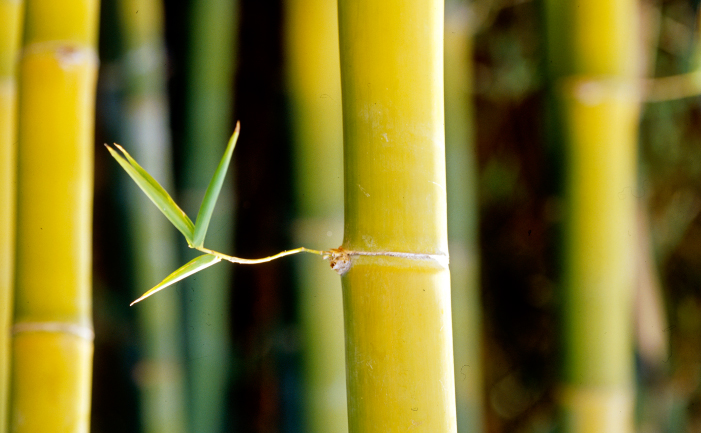Bamboos are wonderful plants and there are over a thousand different species and dozens of garden varieties. In eastern Asia they are used for almost everything from building homes, to making furniture and their shoots are even used in cooking. There are two distinct types of bamboo – clumping and running. If growing bamboo in your garden, it is important to understand the differences which were noted more than 700 years ago in drawings.
Running bamboos
Running bamboos can cause awful trouble in the garden where they can grow from one property to another. These bamboos are classified as noxious weeds in some areas of Sydney. So if you’re growing running bamboo such as the Golden Bamboo (Phyllostachys aurea), Green Onion bamboo (Pseudosasa japonica ‘Tsutsuminia’) or Black bamboo (Phyllostachys nigra) confine them in pots or in garden beds lined with concrete, special rubber or other impervious barriers. The depth of the barrier needed varies among species but to be safe it should be at least 1m (3′) deep.
Note: Galvanised iron is not suitable because the rhizomes will eventually find the joins and also because it will rust over time.
Clumping bamboos
Gardeners would be wiser to stick to clumping types of bamboo despite the beauty of running bamboos. The hedge bamboo (Bambusa multiplex) comes in different forms including ‘Fernleaf Stripestem’ which has green stripes, ‘Willowy’ with more arching branches and ‘Alphonse Karr’ with striped stems. All of these will make good specimen plants or create privacy hedges. For a grander scale clumping bamboo try Giant Buddha Belly (Bambusa vulgaris ‘Wamin’) which swells at the lower joints giving a distinctive appearance or another form Painted Bamboo (Bambusa vulgaris ‘Vittata’), a yellow bamboo striped green.
Eradication
The best way to eradicate bamboo is to tackle the whole clump, one stem at a time. Cut off each stem about 15cm (6″) above ground level and immediately paint it with undiluted Round Up. The sap moves back down the stem and draws the poison back with it, effectively killing the whole plant. Repeat treatments may be required in some cases.
Propagation
Bamboos rarely set seed and so have to be propagated from cuttings or from pieces of rhizome (root-like subterranean stems). This makes some of the clumping bamboo varieties quite expensive to purchase.
New variety
The Baby Panda Bamboo (Pogonatherum paniceum) is an interesting grass from the rainforests of south-east Asia. It is like a dwarf bamboo but is not a true bamboo and is more closely related to sugar cane. It can be used as a pot plant inside well-lit houses, balconies or as an interesting feature plant around ponds, steps or bordering gardens. It likes lots of moisture and will take filtered light to full sun.
Availability and cost
Running bamboo is about $45 for a 25cm (10″) pot and clumping bamboos start at $40 for a 20cm (8″) pot. Baby Panda Bamboo costs around $10-$12 for a 12.5cm (5″) pot and around $18-$20 for a 20cm (8″) pot.
Some of the more common running bamboos can be purchased from general nurseries throughout Australia. Clumping bamboos are available from specialist nurseries; Mr Bamboo (where our segment was filmed), 18 Myroo Road, Terrey Hills, NSW, 2084. Phone: 0412 379 898. Website: www.mrbamboo.com.au or write to PO Box 268, Kempsey, NSW, 2440. Rolo Campbell ‘Tiaro Park’, Tiaro (near Maryborough), QLD, 4650. Phone/fax: (07) 4129 2157 for mail order and nursery sales.
Further reading
For more information about bamboo a good Australian book that has been published recently is Bamboo Rediscovered by Victor Cusack, 1997 Earth Garden Books, rrp $14.95. To purchase the book contact Earth Garden Books, RMB 427, Trentham, VIC, 3458. Phone: (03) 5424 1819, fax: (03) 5424 1743.



